
Harvard Track & Field athlete Victoria Bossong ’25 runs at the Gordon Track and Tennis Center.
Photos by Niles Singer/Harvard Staff Photographer
Art in motion
Stroboscopic technique uses darkness to shine light on the science of movement
Exceptional student athletes, artists, and performers aren’t hard to come by under the bright lights of Harvard’s sports arenas and performance spaces. These images, however, were taken in the dark — a necessary technical requirement to make images using stroboscopic flash.
Photographic motion studies were first pioneered in the 19th century by Eadweard Muybridge, who used multiple cameras and trip wires to photograph horses galloping. The process later evolved to use individual cameras and strobes in the work of the more contemporary Harold E. Edgerton and Gjon Mili.
How we did it
During photoshoots the students and I choreograph a short movement, usually one to three seconds in length. Setting my shutter speed to match this, I place my camera on a tripod facing the student and point my flash unit toward the student’s path of motion. I then turn off the lights and make adjustments to ensure proper exposure of the photos.
As students perform, the flash unit fires repeatedly, each flash creating another likeness of the person. We continue to take photos and adjust variables until we get an image that pleases us both. As a result, the photos in this project are all created in-camera and are not the result of using Photoshop to put multiple images together. Completing these shoots — all in a completely dark room — provided a collaborative and technically challenging project that yields delightfully unique results.
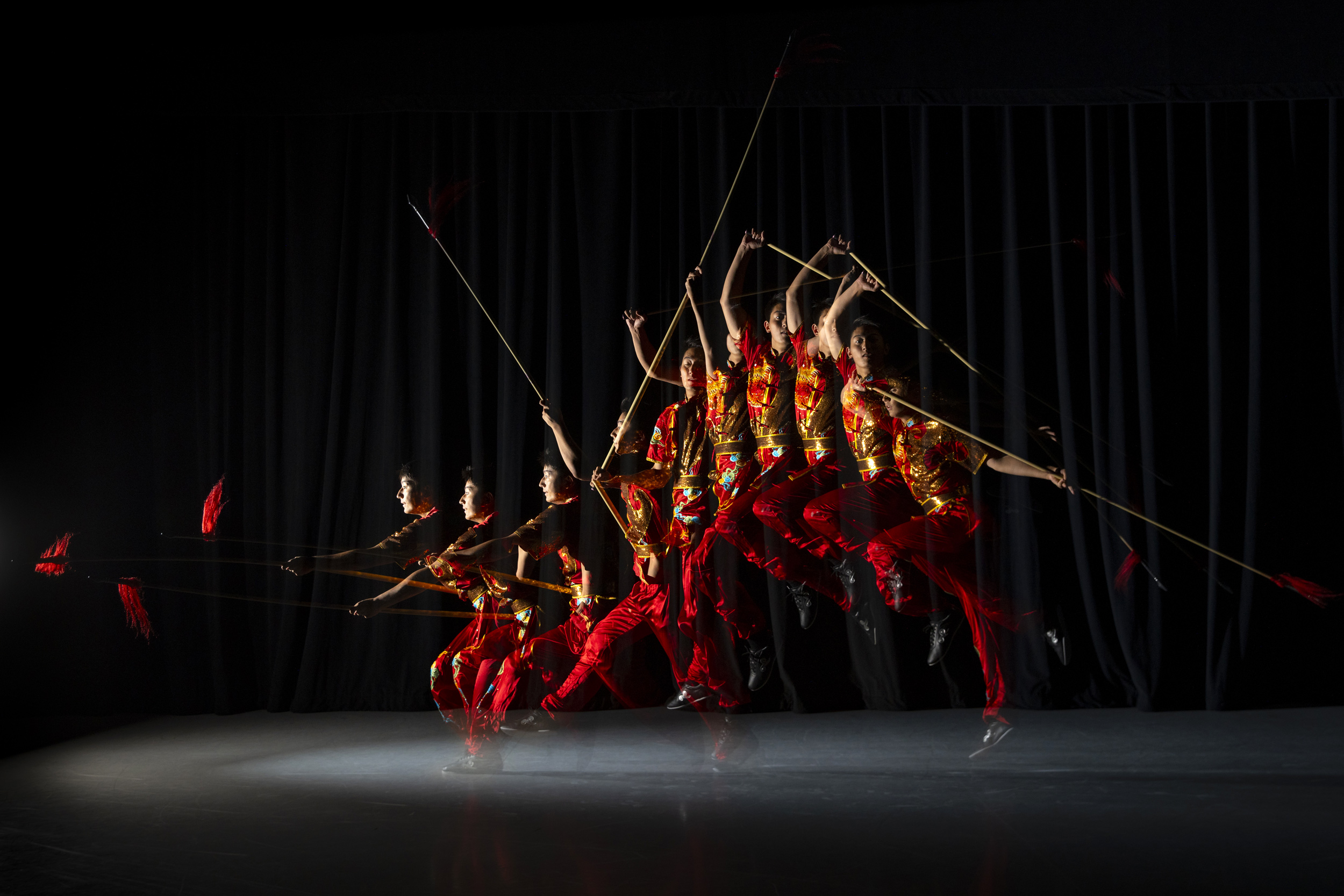
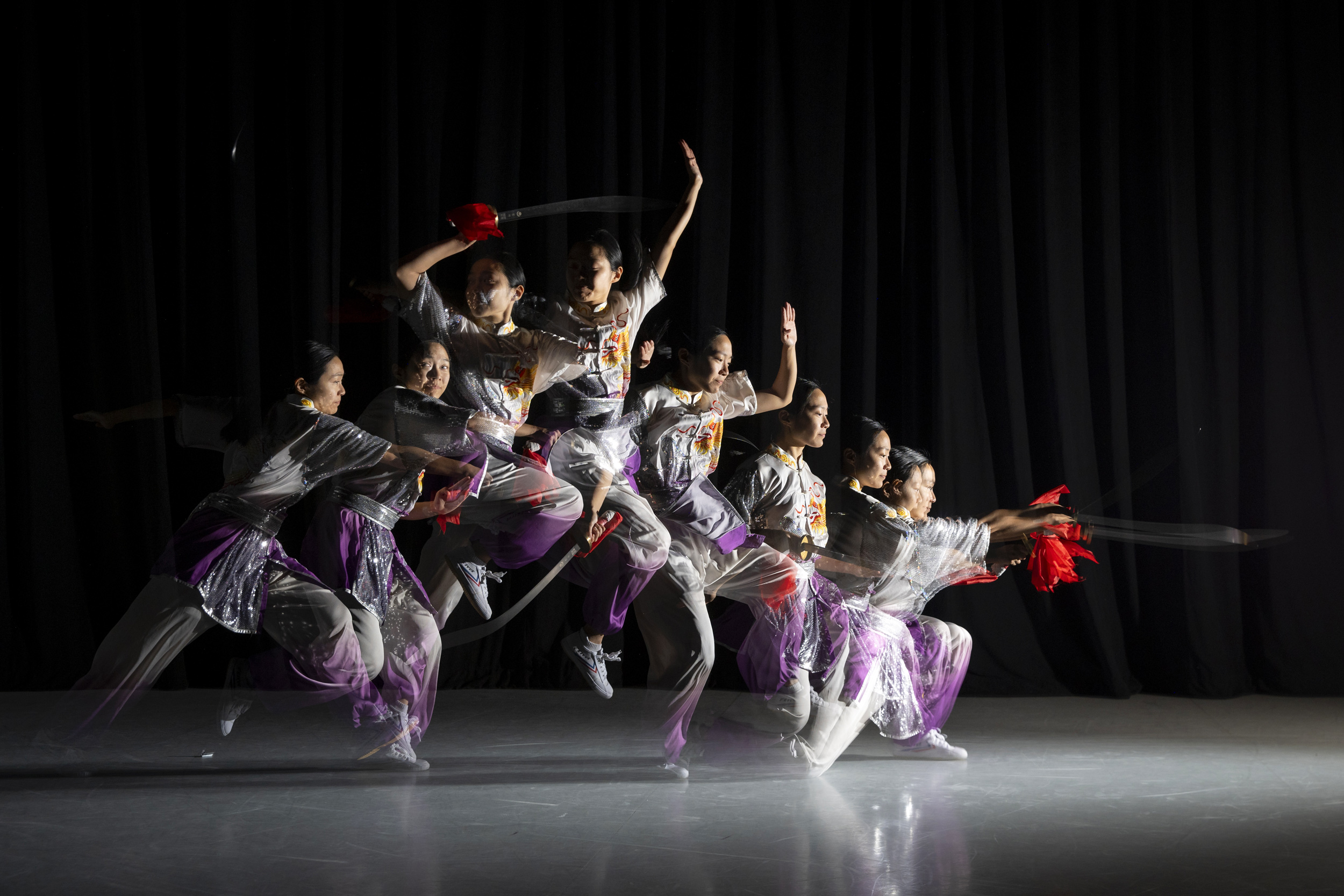
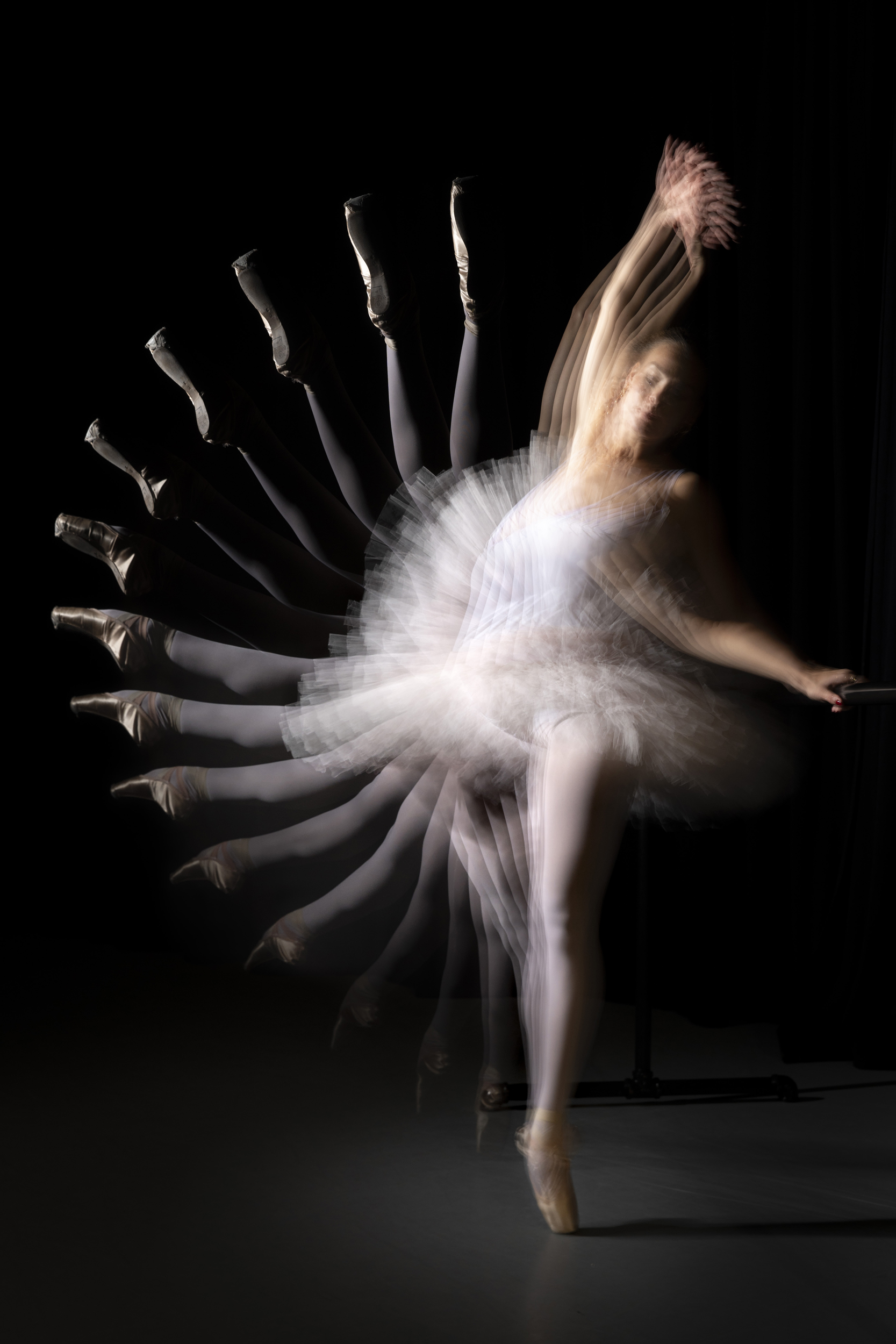

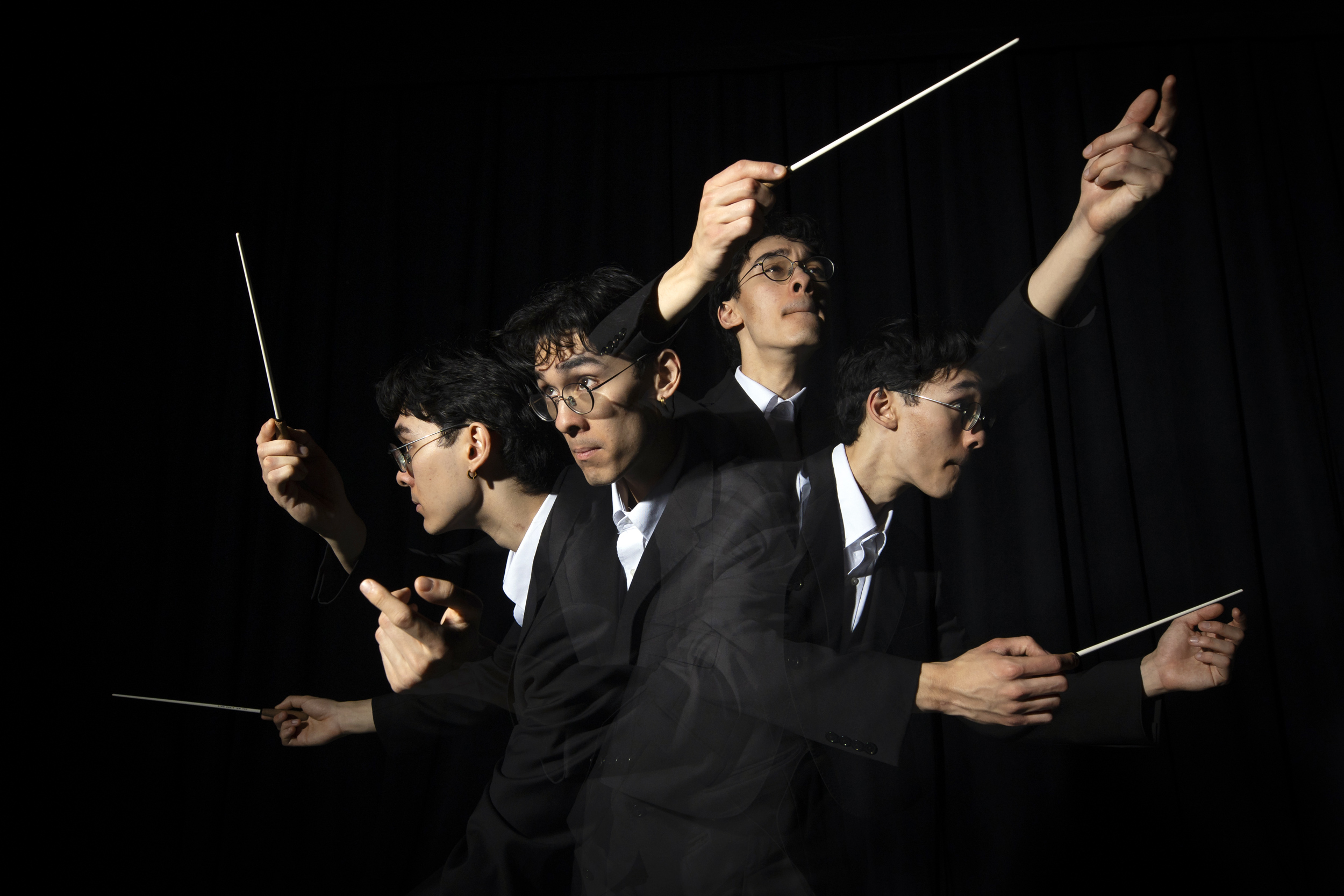


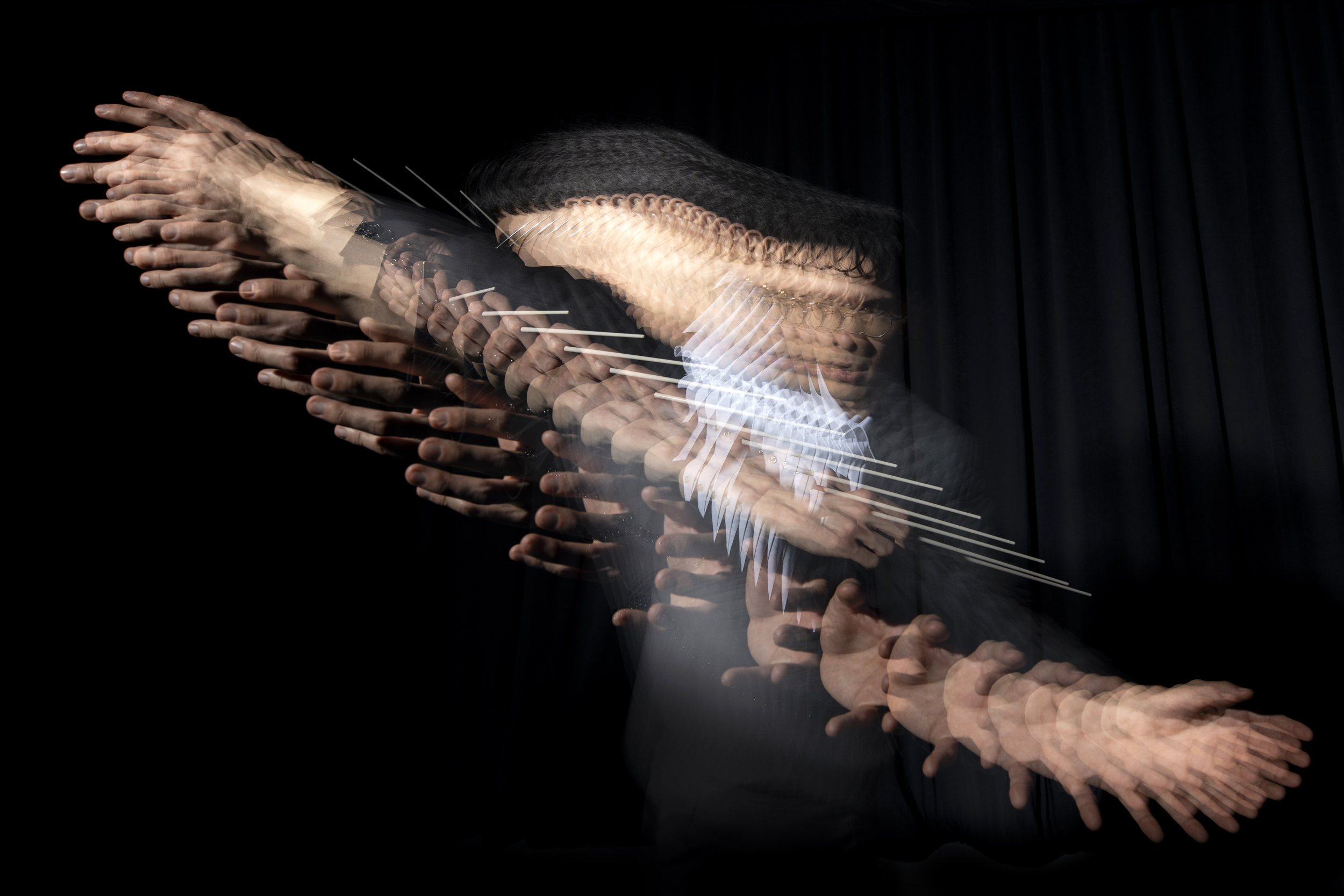
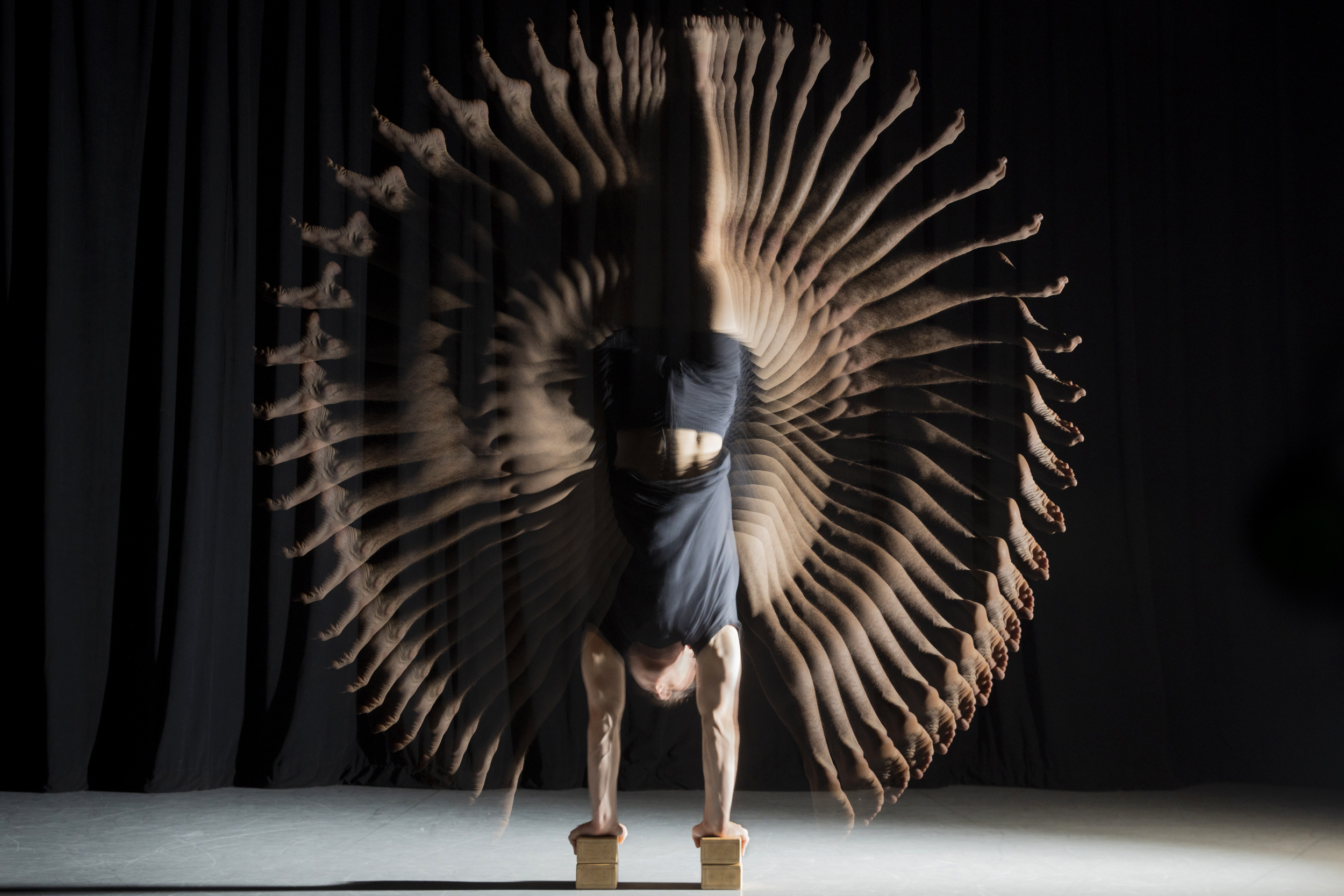
Gymnast and aerialist Brice Laurent ’25 does a handstand.
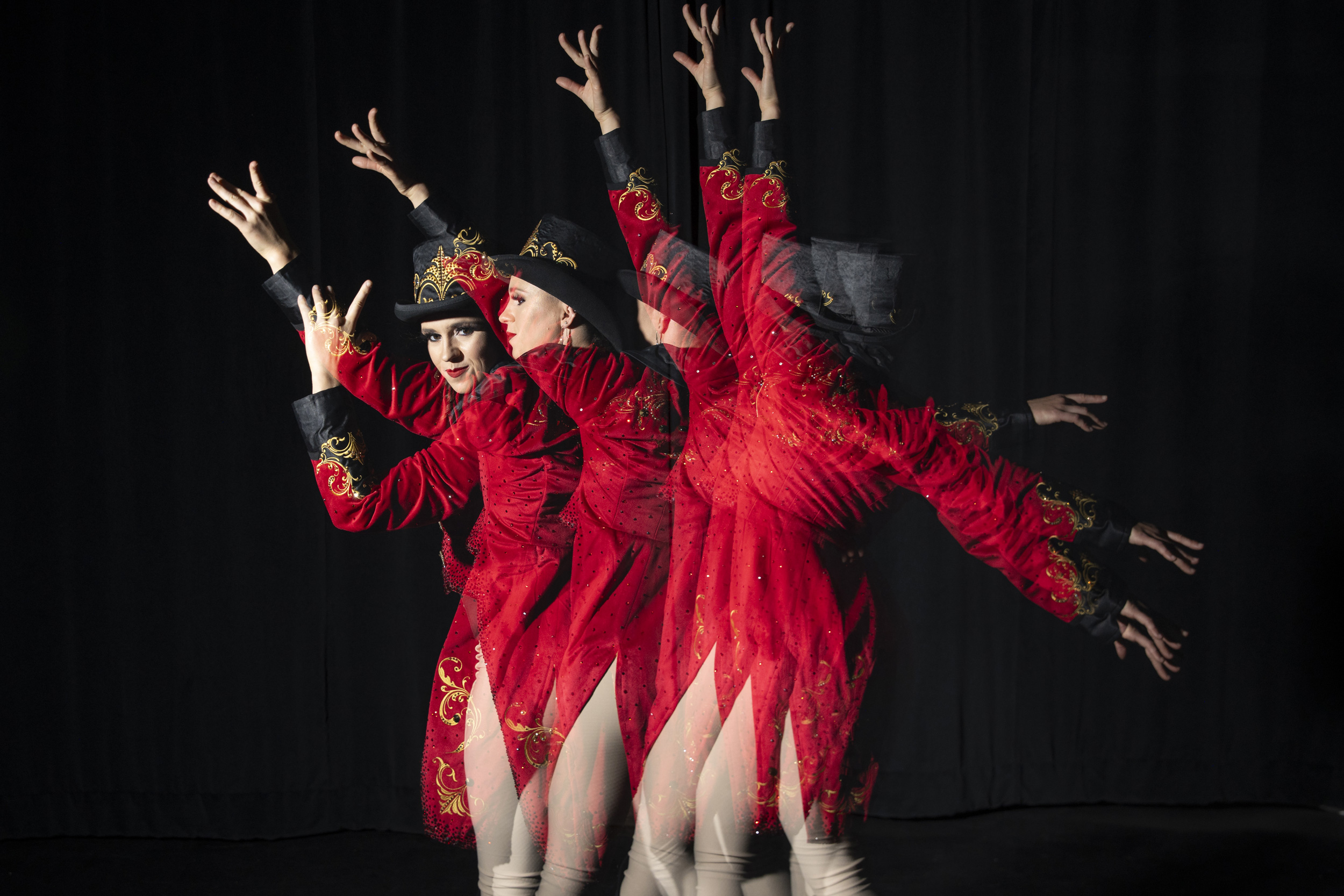
Circus trapeze artist and ringmaster Izzy Patrowicz, a 2024 Extension School graduate, performs.
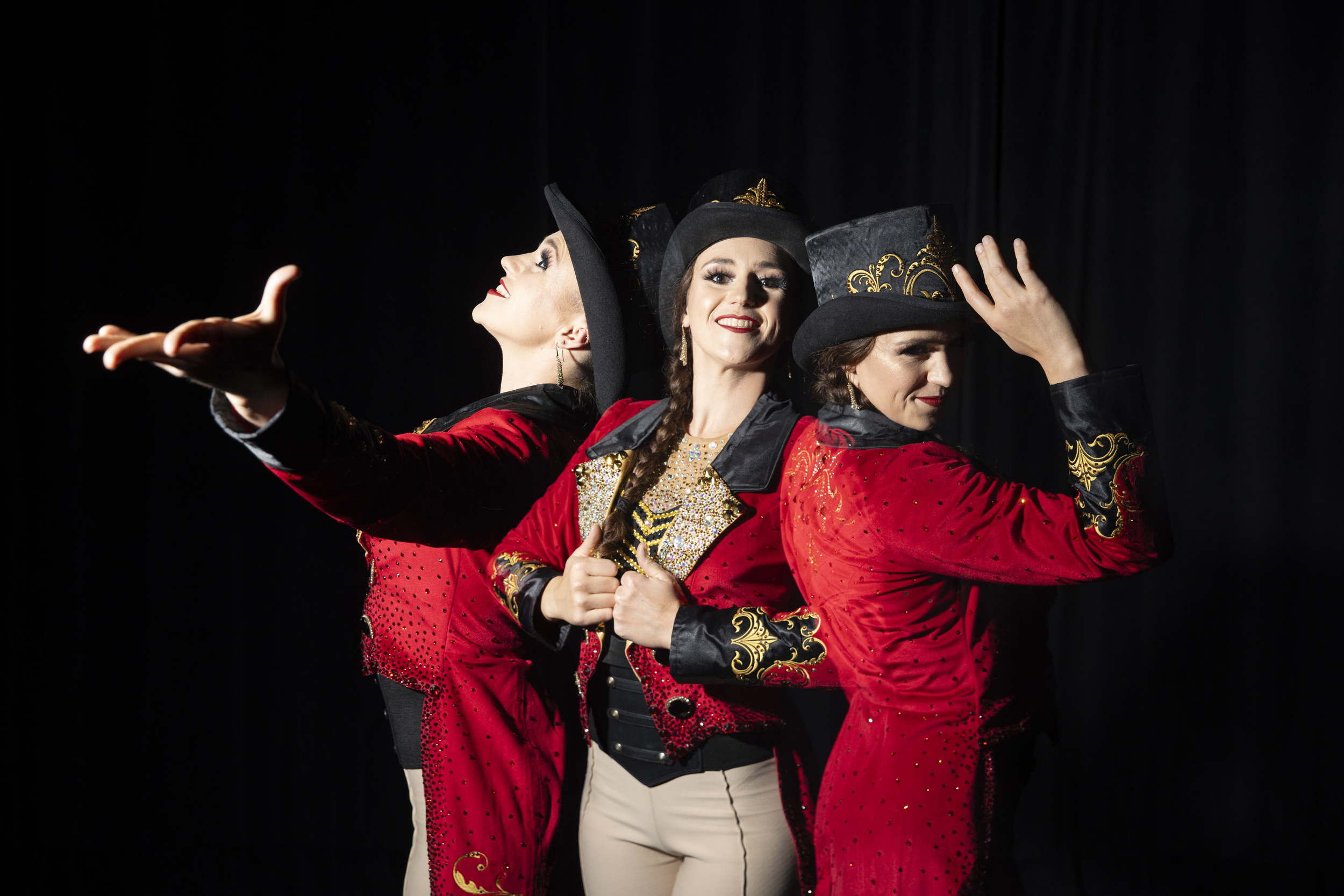
Patrowicz from all sides.




